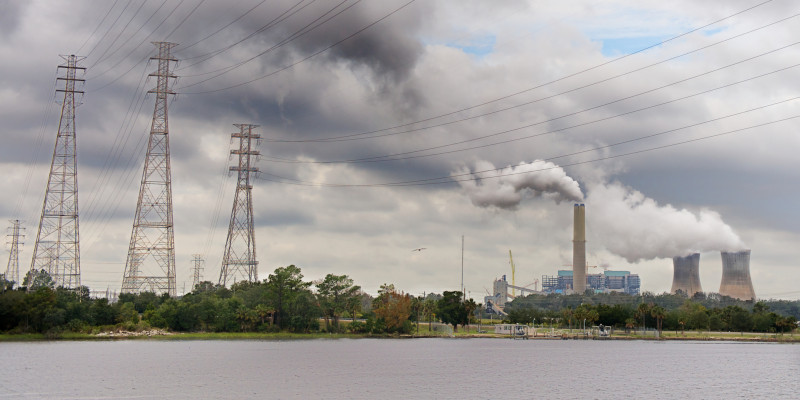Federal Environment Minister Svenja Schulze said: "Germany generated more wind and solar energy in 2018 while also firing less coal, oil and gas. The levels of CO2 emissions are finally decreasing after years of stagnation. This is due partly to weather conditions and other special factors. But it also proves that climate protection measures such as the development of green electricity, phasing out coal and emissions trading are working. But we need more to do more, not only in electricity production but also in the heating sector and agriculture. To ensure that we achieve our climate goals for 2030, I have submitted a draft climate protection law that includes a binding road map and sets out well-defined responsibilities. The legislation must be adopted this year as well as packages of measures in all areas so that Germany gets back on track."
UBA President Maria Krautzberger said: "The numbers prove how important renewable energies are in climate protection. In 2018 renewables prevented about 184 million tonnes of CO2 equivalents, of which wind energy accounted for the greatest share of nearly 75 million tonnes. This makes it all the more important to push ahead with the expansion of wind energy. We therefore put no stock in establishing generally applicable minimum distances of wind turbines from residential premises. This would cause the momentum of wind energy development to falter. Issues related to the environment and health must be considered on-site and on a case-by-case basis."
Of the total 41 million tonnes of emissions reduction, the energy sector accounted for approximately 14 million tonnes of CO2 (4.5% reduction). Electric power generation from renewable energies increased in 2018 with a decline in power production with all fossil fuels, due in part to the shutdown of power plants. Hard coal reflected the greatest decline in emissions, which is in part because EU emissions trading reform raised price of CO2. Coal power plants with an output of roughly 1.5 gigawatts were shut down or put on grid reserve. A further influencing factor was the drought in summer 2018. Low water levels in rivers resulted in lesser transport capacity and, in turn, to higher prices for coal. Lignite coal emissions declined by about 3.6 million tonnes. On 1 October 2018 three power generation units (two in Niederaußem, one in Jänschwalde) stopped electricity production and were put on security standby. Emissions from natural gas firing were also down slightly.
Households and small-scale consumers (i.e. miscellaneous firing installations) made significant cuts in emissions compared to the previous year: roughly 15 million tonnes of CO2 (- 10.9%). Sales of heating oil dropped considerably in 2018, again due to the mild weather conditions and concurrent lower demand for fuel. Lower water levels in many rivers due to the drought were once again a cause. In many cases cargo ships were unable to navigate rivers, which led to heating oil shortages and higher prices. It is assumed that many consumers postponed purchase of heating oil until 2019.
Transport sector emissions were reduced by about 5 million tonnes (- 2.9%). These cuts are traceable to both petrol and – for the first in many years – to diesel fuel. The higher cost of petrol and diesel (7 and 12 per cent higher than 2017, respectively) is the possible cause.
Industrial emissions in 2018 declined by about 4 million tonnes (- 2.8%). Emissions in the manufacture of machinery and equipment are expected to increase whereas steel production, chemicals production and the automobile industry are expected to achieve reductions.
In the agriculture sector GHG emissions decreased by 4.1 per cent. The major factors are declining livestock numbers (cattle: -2.9%; pigs: -4.1%). The use of chemical fertilisers (-9.8%) also declined in reaction to new legislation and climatic conditions. Yield losses as a result of weather conditions also reduced emissions.
Emissions were also reduced in the waste management industry, by 5.3 percent compared to 2017. This steady decline is traceable to developments in landfill practices. Since 2005 biodegradable waste may no longer be disposed at landfill sites. Separation of waste and recycling have also added to the positive trend in the industry's emissions.
Accuracy of the data:
The above results represent first detailed estimates and may therefore contain uncertainties. They are derived using a system of modelling and extrapolated trends based on the detailed inventory of 2017 GHG emissions published in January 2019. Data sources include calculations of primary energy consumption for 2018 published by the Working Group on Energy Balances, preliminary sales figures for oil from the Federal Office for Economic Affairs and Export Control (BAFA), official monthly statistics on energy consumption, production statistics from industry trade associations and other data such as degree day totals. The accuracy of this calculation method is inevitably lower than the detailed calculations made for earlier years. Please note that the published forecasts for primary energy consumption in 2018 were concurrent with adjusted figures for 2017. The latter will be taken into account as the detailed calculations are finalised in the course of the year.
The German Environment Agency will publish and submit to the European Commission a complete official inventory of GHG emissions in Germany for 2018 on 15 January 2020.
 Click to enlarge
Click to enlarge
